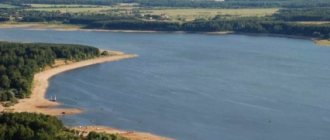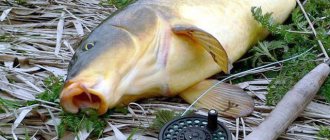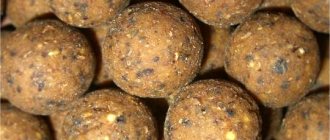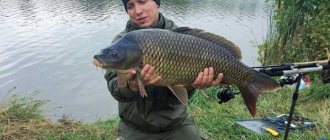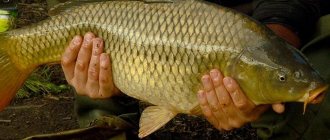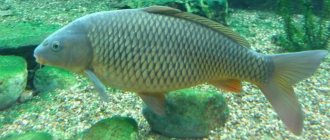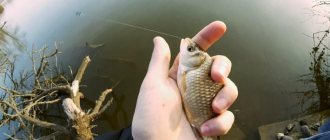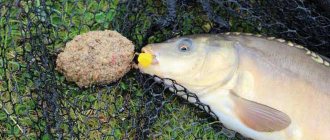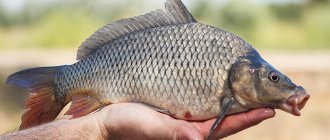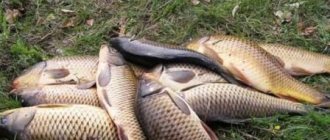Carp is a desirable trophy for any angler. It grows quickly and reaches impressive sizes, and when fished it offers strong resistance, which is why anglers love it. It is caught mainly in paid ponds, of which there have become a lot recently. But even though the reservoirs are paid, it is far from a fact that you will be able to leave with a cage full of fish. Fishing for carp on a pond also has its own subtleties and nuances. Fishing for carp on a pond has its own nuances, which will be discussed in this article.
Carp bite at different times of the year
The darkest season for carp fishing is winter. At this time, it mainly stands in the deep parts of the reservoir and only occasionally feeds.
In the spring, it comes out to shallow water areas where the water warms up the fastest and begins to feed before spawning.
Well, the best season for carp fishing on a pond starts from the end of May and ends in September. With the beginning of summer, carp move throughout the reservoir; they can often be found in deep areas of the reservoir. His favorite habitats are snags, holes, edges, shell rocks, bushes and trees hanging over the water, and the edge of reeds.
In the fall, as the water gets colder and the vegetation dies, the carp go to the deepest parts of the reservoir, where they gather in large schools and gain weight before freeze-up.
How to choose a promising location
Choosing a promising fishing spot is no less important in carp fishing than bait. Carp do not stand anywhere in the reservoir, but try to stick to certain paths and ply along proven routes. Of course, if the fish is active, then it can be caught without knowing the bottom topography. If the reservoir has little vegetation, then the carp stands in deep and flat areas.
Victoria Leshchenko
I've been working hard in the fishing tackle department for the past six years. I can help you assemble almost any gear.
Ask a Question
It is necessary to feed the bait in the same place, and not scatter it at different points. Choose a landmark on the opposite bank and throw bait, aiming at it.
Don't be lazy and study the fishing spot well before fishing. Promising places cannot be seen from the surface of the reservoir. The channel, the transition from one type of bottom to another (for example, from sandy to muddy or vice versa), shell rock - all this is hidden under water. The most accessible way to explore the terrain at the fishing point is to punch the bottom with a marker weight. More expensive - using an echo sounder.
Fishing for carp on a feeder
Feeder fishing for carp requires patience and perseverance. Therefore, you should not wait for bites every five minutes, as happens when catching roach or other white fish.
Gear for carp fishing on a feeder:
- The rod is 2.7 - 4.2 meters long and weighs from 40 to 100 grams. Long rods are needed in cases where it is necessary to make a very long cast (80-100 meters). For fishing at close and medium distances, short rods are quite suitable. As for the rod test, it all depends on the size of the feeder and casting distance.
- Reel size 3000-4000. It must have a good friction brake. The carp resists strongly and a properly adjusted brake will help avoid annoying slips when fishing.
- Monofilament line. The main one has a diameter of 0.20 – 0.25 mm. Leash - 0.14-0.20 mm. Thin fishing lines are best used only when the bite is capricious. The length of the leash is from 20 to 80 cm. Braided fishing line can also be used as the main one, but due to the fact that it does not have “memory”, more frequent fish runs are possible.
- Thick wire hooks. Size - 12-6 according to international numbering. The size of the hook depends on the fish's bite. When the bite is active, you can use large hooks; when the bite is capricious, smaller ones can be used. Hooks must be made of thick wire only. It is not difficult for even a small carp to bend thin hooks. When fishing with corn, bronze-colored hooks work well as they match the color of the bait.
After clipping the line, be sure to count the revolutions of the reel. This will help you find the feeding point in case of a break in the gear. Although many fishermen do not recommend clipping the fishing line, since it will be problematic to remove it when bitten. Instead of a clip, it is better to mark the fishing line with a bright marker or use an elastic band.
The most popular feeder equipment for carp fishing is the paternoster. If the bite is capricious, you should reduce the diameter of the leash and the size of the hook.
Tackle and accessories
- Sharp and reliable hooks Use only high-quality hooks that will not bend when biting large carp. Hardened steel is our option. Always use a sharp hook; if you notice that the hook has become dull, replace it immediately! Even new hooks, just taken from a bag, may not be sharp at all. Each hook should be checked separately. And hooks that have been used for a long time should be replaced.
- Don’t skimp on fishing line. High-quality fishing line will allow you to provide decent resistance to your fishing opponent – carp.
In carp fishing, monofilament is used as the main line, and fluorocarbon is used as the leader. Remember, both the first and second types of fishing line must withstand a net breaking load of at least 20% more than the weight of the potential prey. In water, a fish can make very strong jerks, and even if it weighs 5 kg, the fishing line that can withstand 5 kg of the fish’s weight will break in this case. There are different ways to attach a hook to a PVA bag - Variability of attaching boilies and a hook to a PVA mesh There can be a very large number of options for attaching a hook to a PVA mesh. But in the vast majority of cases, the hook is closely connected to one or two boilies (note that the boilies are not attached to the hook, but only tied next to each other). The carp sucks up the boilies, and with them the hook.
- Keep it simple The more complex your gear, the more likely it is that something will go wrong. Use simple gear and success is much more likely.
- Marker Float Use a marker float to locate holes or flat areas where carp are most likely to be found.
In addition, a marker float is a great way to measure the depth of both the intended fishing location and the place where you have already achieved results. A floating boilie is much more noticeable at the bottom - PVA bags and pop-up boilies Use pop-up boilies in conjunction with equipment based on PVA bags. When the bag falls to the bottom, dissolves and all the boilies spill out to the bottom - the boilies of your hook will rise above the entire clearing by half a centimeter. This will make your rig much more visible and attractive to carp. Before you try this fishing gear, test it at home in an aquarium or in a bowl of water.
- Consecutive change of equipment If the carp does not bite, do not change all the equipment at once.
Be consistent and start with one piece of equipment. After all, otherwise, if you change several elements of the gear at once, you will never know what influenced the result to a greater extent. Back Lead will sink the shock leader (a thick piece of fishing line) and the carp will not be afraid of your tackle - Secure your line with the Back Lead Secure your line with the quick-release Back Lead, which is located on the shock leader and slides freely to the rubber bead so as not to fly out onto the main line.
- Wet the knot before tightening Be sure to wet the knot before tightening. This will make it more durable, the fishing line becomes more elastic and does not deform.
- Thin line and no cheating Do not use too coarse gear when fishing for small carp. Remember, the thinner and more inconspicuous the equipment, the higher the likelihood of a bite.
Fishing with carp gear
Carp fishing is not just fishing, but a whole philosophy. Its essence can be formulated in one sentence – caring for nature. Therefore, the “catch and release” principle is dominant in such fishing. Carp fishers are focused not on the quantity of fish, but on its quality. those. The weight of the trophy is important to them.
Particular attention should be paid to the choice of fishing location, since fishing is often carried out for several days and the wrong place can ruin the entire fishing trip.
A large number of gear is another attribute of a carp fisher. Their set certainly includes the following gear:
- Rods are from 3.2 to 4.2 meters long, medium action and with a weight of 100 to 200 grams. As with feeder rods, the length depends on the fishing distance. Medium action is most optimal when fishing for carp, as it dampens fish jerks better than fast action rods and has better range compared to slow action rods. Carp anglers use a marker rod to measure the bottom. It has high sensitivity, thanks to which all bottom irregularities are well monitored.
- Method type feeders. Unlike feeder fishing, where mesh feeders are more often used, open feeders are used here.
- Monofilament line with a diameter of 0.30 - 0.50 mm.
- Thick wire hooks.
- Rod-pod or stand for fishing rods. You can attach 2-4 fishing rods to this stand. It is equipped with electronic and mechanical bite alarms.
- Electronic bite alarms. A very convenient thing when fishing for carp. The sound signal can be configured in different tones. This is very convenient, because by the sound you can determine which rod the bite occurred on.
- Powerful carp reels. Such reels have a large fishing spool (you can wind it with, for example, 300 meters of fishing line with a diameter of 0.30 mm) and are equipped with a baitrunner function (thanks to it, the carp will not be able to drag the rod into the water).
- Big landing net. Since the main goal is to catch trophy carp, the size of the landing net should match the fish.
Particularly advanced carp anglers feed the place using a radio-controlled boat. With its help, you can feed any point on the pond without spending a lot of effort. You can also import not only bait, but also equipment.
The most popular bait for this kind of fishing is boilies. They are mounted using hair accessories. Hair installation is specially designed so as not to injure the lips of the carp. Since the hook is located at a distance from the bait, the carp will not be able to swallow the bait deeply. In addition, it is detected on the lower lip, where it has few nerve endings.
Fishing technique
- Be mobile Try not to adhere to the “I’ll fish in this place” technique. Never go fishing with a pre-planned route for swimming and searching for places. Most of the time, the fish will be where you weren't expecting them, so be sure to try new spots. This way you will gain significantly more experience in carp fishing. Feed where there are carp, rather than waiting for carp to feed where there is none. In addition, if you see legitimate reasons for changing a location, change your location without thinking, and you will definitely see that it is much easier to find fish by constantly moving.
- It works - don't touch it! It is difficult to understand anglers who change bait even after the most incredible catches.
From year to year we see anglers who have practically devastated lakes using just one type, type, model of bait. And then, next year, they decide to change the bait to something else, sometimes not even approximately similar to the previous catchable option. If a carp likes one of the baits, it willingly eats it as bait and bites on your equipment - this is a sign that the bait works and the carp appreciates it, so why change it? There is no need to change (unless, of course, you have evidence that the bait is losing its potency). Some anglers will say that the bait has “burnt out” and the bite on the bait has become much weaker over time, in fact this can easily be explained by the fact that the fish have changed their habits, tendencies or behavior (but they have not stopped loving that bait!). Try changing your tactics using the same bait and you will find that your results will improve. Fish are not so smart that over time they will become wary of any type of bait. Carp in a certain body of water like certain baits, they smell the bait and if they feel that this is what they like, they will definitely eat it. Highly scented/colored baits with low quality internal nutritional contents are much less preferable. A carp may actually initially have its eye on such bait, but then, having tried it, it will understand that this is not what it would like to eat. Such baits work well for the first time on a body of water, much like selling out tickets to a movie premiere, while after a couple of weeks interest in the film is already close to zero. The coastal zone is an excellent source of food for carp - Don't neglect fishing near the shore Some of the largest carp in the country were caught 20-30 cm from the shore. The steep bank of most lakes, rivers, and canals is an excellent source of food for carp.
- Be adventurous Give the carp a try that your opponent anglers are not using. The fish may reward you with a bite.
- Feel the bottom Feel the character and depth of the bottom. After casting, the line is kept under tension until the rig sinks to the bottom. Once the bottom is reached, your line will sag. Also, with step-by-step wiring you can determine the bottom topography and nature (silt, shell, clay, pebbles).
- Trust your method of fishing If you adhere to a certain method of fishing and want to find out whether it will bring you success - remain faithful to it at all costs, for a predetermined period of time. It is not advisable to abandon the method due to the lack of bites; perhaps the reason is in the details - you need to work on them.
- Don't hesitate to change your location. Be prepared to move around. You should not overly indicate your presence by laying out all kinds of gear and related attributes around the fishing spot. Be more mobile. The fish often changes place and this is visible to the naked eye.
- But the fish swam away. The lion's share of fishermen catch carp at a not very large distance from the shore (40-60 meters). But when there is an influx of fishermen, the carp feels danger and moves to further distances, and the fishermen think that the carp is not interested in the bait. Only those who can send their bait to 100-140 meters will achieve success. But don’t forget about the rule of fishing near the shore (tip No. 46).
- Don't neglect fishing near the surface On hot summer days, don't neglect fishing near the surface. Some successful fishermen catch large carp every year in the upper layers, and this is a very justified tactic in those moments when no one is biting on the bottom.
- Try again Trial and error is what leads a person to success in any business. Carp fishing is no exception. You don't have to change the tackle completely, but you can try fishing in different places, change parts of the tackle to thinner ones, use a different bait, and so on.
- Don't be upset about losing a fish. If a fish escapes, it means the fish was stronger than you. You will still have the opportunity to improve your fishing skills, improve your tackle and equipment and, of course, sharpen your hooks. Fishing is a process of evolution from a novice angler to a professional angler. It would be less pleasant if the process of evolution went in the opposite direction.
- Effort = number of fish caught The more effort you put in, the more carp you will catch. This also applies to how many rainy fishing trips you sit through, how many times you get up to fish at 4 o’clock in the morning.
